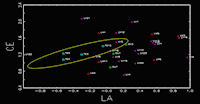
Figure 19: NAA analysis of Olmec archaeological sites and quarries
For a precise characterisation of both rock from the quarries and archaeological artefacts, we used XRD and petrography. As serpentinite (antigorite) and gneiss suffered a process of diagenesis, we used a hollow drill in order to take archaeological samples that had been buried in clayed soils for centuries. We took samples from the core of the artefacts.
After we had characterised the archaeological materials, we noticed that there was a cultural and also a systematic pattern in the choice of serpentinite (antigorite) for the manufacture of precious goods by the inhabitants of the Olmec sites. All the examples pertained to the same kind of rock.
Later, we sampled the geological quarries that showed the same mineralogical characteristics. At Cuicatlán (Oaxaca) and Tehuitzingo (Puebla), we applied both techniques – petrography and XRD – in order to characterise the samples.
Neutron Activation Analysis was used on the samples taken from the Olmec sites in order to determine their provenance.
By using Gauss 5.0, we examined the distribution of the ellipse of one of the quarries to an interval of 95 per cent. We can see the diference of the provenience of the rocks between Tehuitzingo and Cuicatlán (Fig. 19).
© Internet Archaeology/Author(s) URL: http://intarch.ac.uk/journal/issue26/21/4.html
Last updated: Wed Jul 29 2009